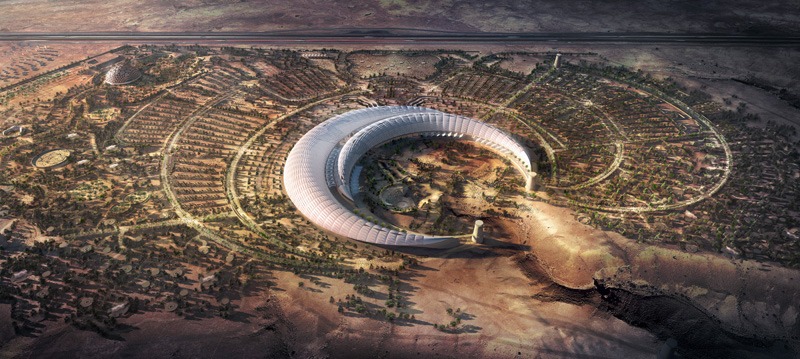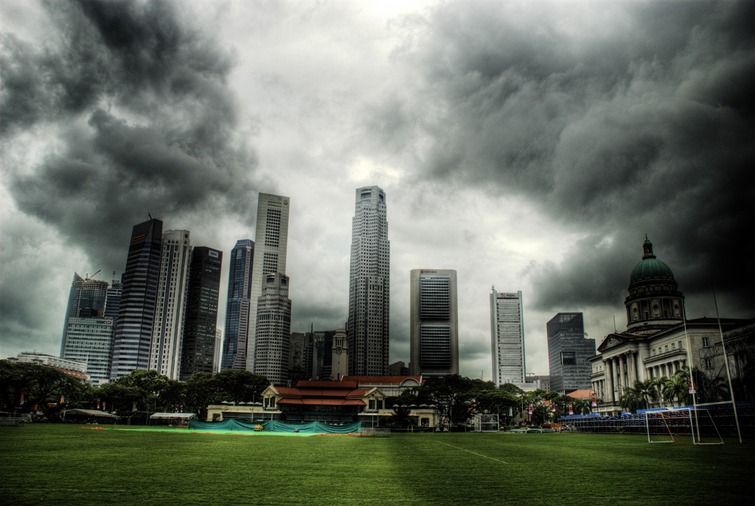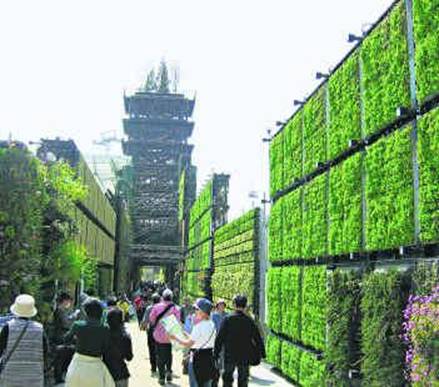I came across this definition today, from a large UK landscape practice: “a sustainable urban landscape achieves the correct balance between environmental, economic and social needs” and regret that it is not helpful. It does not tell us how to find a ‘balance’ and it implies that landscape architects, assuming they are to be involved, have some kind of knowledge, skill or training which lets them decide what is ‘correct’. A much better definition is required if we are to have better designs for sustainable landscapes.
Category Archives: Sustainable design
Asian landscape architecture and garden design in the twentieth century
Why were Asian garden design and landscape architecture such a disappointment in the twentieth century? There is much work which looks anti-ecological, anti-contextual, almost anti-human – and far too American or far too European (see note on Chinese context theory). Luckily, there are some exceptions, including the twenty-first century landscape designs for King Abdullah International Gardens and the Abu Dhabi Corniche. Instead of writing an essay (which is is in fact what I have done for the final chapter of Asian gardens) I offer the short statement that the problems with Asian garden and landscape design in the 20th century resulted from a poor understanding of design history and theory. There were lacks of appreciation:
- by many landscape architects that their profession’s design theory was at least 4000 years old on 14 May 1863 ( Norman T Newton gives this day as ‘the first official use of the title Landscape Architect’ – he knew the art was older but his perception of the theory was post-1863)
- by the Asian clients and designers who believed Asia should be ‘modernized’ by being ‘westernized’
- by the World Bank and associated development agencies which were certain that western is better, because it is based on science , and because science is the ultimate criterion of truth
- by a host of architects, engineers and planners who believed too fervently in ‘master planning’ and therefore fostered the tragedy of feminine design
- by bankers and property developers who believed that calculation of short term profit was the way to distinguish good projects from bad projects
- by the abstract and anti-contextual nature of international modern design theory
- by an inadequate knowledge of Asian design history and theory
The corrective to these Seven Deadly Design Sins should be gulping that wonderful Asian virtue – HARMONY. History matters, theory matters, science matters, beliefs matter, profit matters, ecology matters, design matters, people matter -we all matter!
Sissinghurst Garden Design and Management

Photogaph Philippe Leroyer
BBC4 is showing a series of programmes about Sissinghurst Castle Garden. Here is a link to the first episode on the iPlayer – the link will not be active for long and there is a link to a BBC Sissinghurst webpage. Adam Nicholson and Sarah Raven live in the family house, because Adam is Vita’s grandson, but Adam’s father (Nigel Nicholson) gave the property to the National Trust. The programme presents Adam and Sarah as enlightened visionaries able to understand the past and present. But the National Trust staff are presented as obstinate blockheads able to say little more than ‘This is the way we do it because this is the way we have always done it and this it the way we will continue to do it’. Since the series runs to 8 episodes one can’t help wondering it the editing has been done for dramatic effect. Unless the National Trust Blockheads are going to be seduced by sweet reason, the series is going to end up portraying the Trust as a disorganised rabble which leaves decisions to junior staff.
Sissinghurst gives me the impression of being too commercial and of having too many visitors. It this is what the National Trust wants, they should avoid the cowpats Adam wants to bring back as an aspect of traditional farming. The BBC slipped in the titbit that Vita had over 50 lesbian lovers and the Independent (28.2.09) refers to ‘the site’s fascination for today’s educated lesbians’. Adam predicts that ‘By Easter, there will be rivers of lesbians coming through the gates’. It would be useful to know whether the return of traditional farming practices (‘cowpats’) would attract or repel the lesbians, and where Adam stands on the lesbian issue. I look forward to Sissinghurst holding its first Gay Pride day. As they say, ‘history repeats itself as farce’.
An excellent landscape design for the King Abdullah International Gardens
 Having slagged off the design of their capital city, I am only too pleased to congratulate the Saudis on the design of a new Botanic Garden. It reminds me of a photograph from the Hubble Space Telescope – perhaps of a swirling galaxy. This is highly appropriate for a garden which looks back to the origins of life on earth and forward to a more sustainable future. Siteworks began in 2008 and the expected construction period is 3 years.
Having slagged off the design of their capital city, I am only too pleased to congratulate the Saudis on the design of a new Botanic Garden. It reminds me of a photograph from the Hubble Space Telescope – perhaps of a swirling galaxy. This is highly appropriate for a garden which looks back to the origins of life on earth and forward to a more sustainable future. Siteworks began in 2008 and the expected construction period is 3 years.
The landscape architect and project team leader for the King Abdullah International Gardens was Nick Sweet of Barton Willimore. Some 150 hectares of the 160 ha site will be planted with indigenous species. They will be watered only by stormwater outlets and treated sewage effluent generated on site. All the power will be solar, all wastes will be recycled and 93% of the construction materials (by volume) will be obtained from the site (rock, stone, gravel, soil). Only electric vehicles charged from the solar array on site will be used for visitors. What more could one ask? I have every hope of it becoming that rarest of rare delights: an excellent work of landscape architecture.
PS to King Abdullah: next time Saudi Arabia needs a New Town – make sure the design team is led by a landscape architect. You can expect the most favourable benefit: cost ratio for any project in your Kingdom’s recent history.
yet more ambiguity
in light of the new information, i’ve reconfigured a possible layout. see what you reckon.
i think redevelopment should take place on the east of the site to re establish the streetscape, and would like to place some kind of open courtyard to the north.

Pathways
Perhaps our expectations of urban ‘greenspace’ are about to change? This photograph was taken at the AICHI Bampaku expo held in Japan’s Nagoya City in the Aichi Prefecture and published in the Hindu Business Line. The purpose of the Expo was to “generate awareness on issues of pollution, global warming and energy use.”
It raises an interesting question. How far do we want go down the technology route and how far do we want to go in being smarter about how we do things? Perhaps there is a middle way between the two alternatives? How should designers respond to the twentyfirst century challenges of carbon trading and carbon sequestration?


